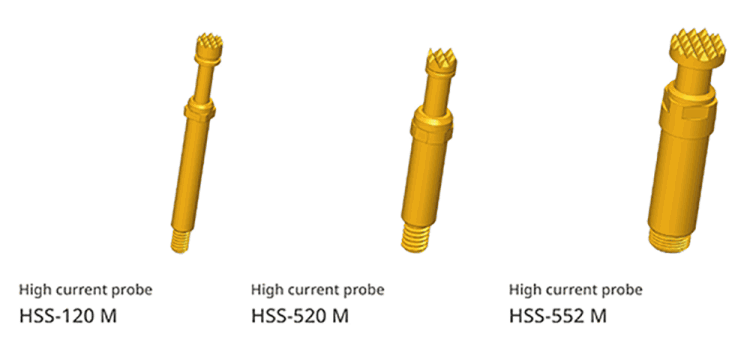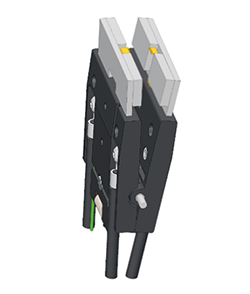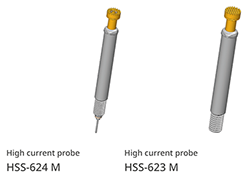
The battery is a key technology for the step towards sustainable energy storage. In particular, the focus is on much needed green efficiency and forced reduction of CO2 emissions. It is fundamental that movement requires energy. Similarly, range requires the possibility of efficient and highly capacitive energy storage, and this results in the need for highly developed and economical batteries.
The challenge in the measurement and testing procedures create varying requirements. High currents of up to 600 A defines the testing product required. Furthermore, it may sometimes be necessary to penetrate the native oxide layers on the tabs/terminals with the test probe. A low-resistance, cross-section maximised contact point enables the transmission of high currents.

INGUN not only offers products for contacting high currents, but also for four-wire and temperature measurement on the contact surface, and for diverse installation situations accommodating the most varied battery geometries. INGUN’s product portfolio is scalable and modular in design.

Cylindrical battery cells are the most frequently used geometry in the spectrum of standardised cell variants. While they are listed for household purposes as A/AA/AAA, in the e-mobility sector they are known as sizes 1865, 2170, and the newly developed 4680 cell. In the test procedure, the cylindrical shape basically represents an easy-to-contact outer geometry and accessibility of the terminals. The application range of the rated currents is between 2 and 200 A.
Pouch cells allow freedom in term of their basic shape and design, as well offering energy density in the middle range. The currents for forming, charging/discharging, and testing are correspondingly high due to the higher capacities and outputs. The application of specialised contacting solutions by means of clamping technology are used here with the applications having rated currents between 20 and 400 A.
The prismatic cell is the most energy-dense cell among the respective cell geometries. Due to the compact, robust shape of the housing, it is the preferred application in the automotive sector. Various options for mounting contact elements can be provided on the battery tabs/terminals. However, due to the high currents of between 200 and 400 A and the oxide layers, contacting the poles is considerably more difficult. However, this test challenge can be mastered sustainably with the help of INGUN products which can provide a range of high-current probes.

The testing of battery cells requires reliable, low-resistance contacting, with as little mechanical stress as possible, even at high currents up to 600 A. With specialised four-wire measurement solutions and durable contact surfaces, INGUN provides reliable, efficient contacting solutions for battery cells, and the precise measurement of currents and voltages directly at the terminals.
| Tel: | +27 11 726 6758 |
| Email: | [email protected] |
| www: | www.eispty.co.za |
| Articles: | More information and articles about Electronic Industry Supplies |

© Technews Publishing (Pty) Ltd | All Rights Reserved